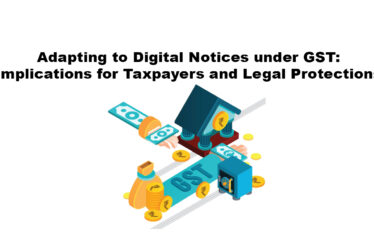In India, export regulations mandate that exporters have to submit documents declaring the value of goods exported when they leave the country. Before the introduction of the Export Declaration Form (EDF), this was used to be in the form of submission of GR and PP forms which is meant to regulate and monitor foreign exchange transactions against physical goods exportation. However, before the introduction of the Software Technology Park (STP) scheme in 1991, software export through data communication links was unable to be evaluated by the customs department. There was no tangible product being exported in many cases, which in turn pushed the government to come up with a new system and evaluate the software export which happened through telecom links.
Thus the Department of Electronics (now DeITY) came up with a solution that enabled the government to evaluate software export through the introduction of SOFTEX form, which replaced GR and PP forms in the case of software exports. The certification and evaluation rested in the hands of STPI, which was the administrative authority of the STP scheme. The policy difference between SOFTEX and GR/PP form is that SOFTEX is filed after the software export has already taken place, while GR/PP forms are filed parallel to the process of shipment from the port.
As per the RBI guidelines, SOFTEX form is required to be submitted by any firm that does IT/ITeS (Information Technology enabled Services) exports through various data communication channels. The valuation is performed according to the customs valuation rules. It is applicable for companies that are not registered under the STP or SEZ as well (known as non-STP units). Exports which do not fall under IT/ITeS are exempt from having to submit the SOFTEX form. Within this context, IT covers both software products and services including design and development, implementation and deployment, software maintenance, etc. ITeS includes all the services that are enabled by Information Technology (BPO, KPO, data processing, etc.). A failure to declare said exports and get them certified with SOFTEX forms could result in penalties or counted as a violation.
For companies that are not registered under STP or SEZ, it is possible to show their exports as service exports and not as software. However, this can lead to complications down the line, when GST considerations come into play. Also, when export proceeds are obtained, any remittances received would be treated as ‘general services’ or as unlawful export proceeds. It may also act as a deterrent to future clients of the company if they are not able to show their export performance related to software projects. Thus, while there may not be an immediate threat of non-compliance unlike the exporters in STP or SEZ, DTAs (Domestic Tariff units) are still encouraged to get registered under an STPI as a non-STP unit and submit their declarations to the STPI to get them certified. Once the SOFTEX form is certified, your export is classified as an export of ‘Software’ under the Foreign Trade Policy (FTP).
While SOFTEX was a necessary step at the time of its inception, it is too cumbersome in its current state in the present day and age of technology, as most companies find the process difficult due to the excessive paperwork involved in it. With the digital assets and the digital movement, government bodies are continuously working on the strategies to make the process easy for every individual and avail benefits of the same. We are keeping a close eye on the procedure and provide the latest updates right here, stay tuned!





